Marvel Rivals Ranked System Breakdown: Progression, Tiers & Competitive Details
Updated On: November 12, 2025 by Aaron Connolly
Marvel Rivals Ranked System Overview
Marvel Rivals runs a nine-tier competitive ranking system, so you get to test your skills against players at your level. The system really focuses on team performance, but it still finds ways to reward standout individual play.
It also builds in some protective mechanics to help you keep your progress if things go sideways.
Key Objectives of Ranked Play
Ranked play in Marvel Rivals isn’t just about bragging rights. The matchmaking system tries to keep things fair by pairing you with others at a similar skill level.
Team performance takes center stage in this system. Wins and losses push your rank up or down the most.
Individual play can give you a little bonus or soften the blow from a bad game, but teamwork really drives your progress.
You unlock competitive mode at account level 15. Once you hit that, you’ll start earning Rank Points (RP) for wins and losing them for defeats.
Weekly participation rules keep things active. You have to finish at least seven ranked matches every week if you want to hold or climb your rank.
Once you reach Gold III, things get more tactical. Teams can ban two heroes before matches, so you’ve got to think carefully about hero picks.
Chrono Shield Mechanic
Marvel Rivals uses the Chrono Shield to stop you from losing a ton of rank points when matches go wrong. The game activates this shield if it spots unfair conditions.
You’ll see the shield kick in if your team suffers disconnects, there’s a big skill gap, or technical issues hit. The shield cuts down RP losses in those situations.
If you play really well, you can snag some small RP bonuses even in a loss. On the flip side, poor performance can lower your RP gain from wins.
Safety nets keep you from dropping hard during unlucky streaks. The system knows when things are out of your hands.
It’s a nice touch—it lets you play without constantly worrying that bad luck will ruin your progress.
Ranked Ladder Structure
Marvel Rivals splits players into nine main divisions—from Bronze III all the way up to One Above All. Most ranks have three sub-tiers (III, II, I), except for the very top.
| Rank | Sub-tiers | Special Features |
|---|---|---|
| Bronze | III, II, I | Starting rank for new players |
| Silver | III, II, I | Basic competitive play |
| Gold | III, II, I | Hero bans unlock from Gold III |
| Platinum | III, II, I | Increased competition |
| Diamond | III, II, I | Advanced skill level |
| Grandmaster | III, II, I | Elite players |
| Celestial | III, II, I | Top-tier competition |
| Eternity | Single tier | Rank decay enabled |
| One Above All | Single tier | Top 500 players only |
Each division covers about 100 RP. If you’re on a hot streak, you can rank up fast, but a losing streak will drag you back down just as quickly.
Rank decay kicks in at the top. Eternity and One Above All players have to stay active, or their RP will slowly slip away.
When a new season starts, your rank drops by exactly nine divisions from where you finished.
Ranks and Tiers Explained
Marvel Rivals uses a 9-tier ranking ladder, with 23 total ranks. You start at Bronze III and can climb all the way up to the rare One Above All.
Rank Points (RP) track your progress, and you’ll need different RP amounts to move up each tier.
Bronze to Diamond Progression
The early ranks in Marvel Rivals use a basic three-tier system. Bronze, Silver, Gold, Platinum, and Diamond all break down into III, II, and I.
To climb these ranks, you need:
- 100 RP for each sub-tier
- 300 RP for a full tier jump
Everyone starts in Bronze. Over 32% of ranked players sit in Bronze III, which kind of shows how tough the early climb can get.
Silver and Gold bring in more competitive elements. Once you hit Gold III, the pick/ban phase starts, and teams can ban two heroes each. That really shakes up how matches play.
If you get on a win streak, you can skip sub-tiers. Four wins in a row can give you enough bonus RP to leap ahead. Playing in focused sessions seems to help keep those streaks going.
Diamond is where things get serious. Only about 4% of players reach Diamond, and the skill gap between Platinum and Diamond is pretty obvious in matches.
Grandmaster and Celestial Ranks
Grandmaster and Celestial are where the top players fight it out. These ranks still have three sub-tiers, but the skill level jumps way up.
Fewer than 2% of players reach Grandmaster. The competition gets fierce as everyone fights for the limited higher-tier spots.
Party restrictions get tighter here. All party members have to be within three divisions of each other. This stops boosting and keeps things fair.
Celestial is even more exclusive—less than 0.5% of players make it. Celestial II players can only duo queue with Eternity or One Above All players if they’re within 200 RP.
Matchmaking takes longer up here. With so few players at this level, you’ll wait longer for a game—unless you play during peak hours.
The skill ceiling between Grandmaster and Celestial is massive. By this point, you need pro-level game sense to keep climbing.
Unique Eternity and One Above All Ranks
Eternity and One Above All ditch the three-tier setup. These single-tier ranks sit at the very top of Marvel Rivals.
Eternity is home to about 0.04% of players. If you get here, you’re playing against pros and semi-pros pretty often.
One Above All is for the top 500 players worldwide. That’s only 0.01% of the ranked player base—super exclusive.
Rank decay is real at these levels. You’ve got to play at least once a week, or you’ll lose up to 500 RP. Seven days without a match drops Eternity players back to Celestial.
Queue restrictions are strict. You can only solo or duo with Celestial II/I players within 200 RP. This keeps the top of the ladder balanced.
One Above All is the ultimate badge in Marvel Rivals. These players usually show up in tournaments and really set the bar for skill.
Rank Points and Advancement Rules
Marvel Rivals uses Rank Points (RP) to move you up and down the ladder. You need 100 RP to go up a sub-tier and 300 RP for a full tier. If you get on a win streak, you can even skip divisions.
Earning and Losing Rank Points
The RP system is pretty simple. You grab 100 RP to move from, say, Silver III to Silver II.
A full tier jump takes 300 RP. That’s how you’d go from Gold III to Platinum III.
Season 2 changes put more weight on individual performance. Now, you get extra RP for kills, time on objectives, and not dying too much.
Your RP gains and losses depend mostly on match outcome, but your own stats matter too.
The game also looks at the skill gap between teams. If you beat a higher-ranked squad, you’ll get more RP than if you just beat a team at your level.
Win Streak Bonuses
If you win four or more games in a row, you’ll start seeing bonus RP. Sometimes these bonuses are big enough to let you skip whole sub-tiers.
Climbing the ladder gets way faster if you’re on a streak. We’ve seen people jump from Gold II to Platinum III just from a single good run.
Win streak bonuses show up more in lower tiers like Bronze and Silver. Once you hit Diamond and higher, the system gets stingier with those extra points.
Pro tip: Play ranked in focused blocks instead of random matches. That gives you a better shot at building a streak.
Impact of Performance on Promotion
Your individual performance matters more than ever, especially since Season 2. If you put up strong stats, you can earn extra RP, even in close losses.
Key performance metrics include:
- Kills and eliminations
- Objective time and captures
- Death rate and survival
- Damage dealt and healing done
Playing your role well helps more than just chasing kills. A support player who keeps the team alive gets more RP than one who only looks for kills.
Heads up: Don’t ignore the team goals just to pad your stats. The system rewards wins above everything else, and good teamwork usually boosts your own numbers anyway.
The matchmaking algorithm also takes your track record into account. If you keep outperforming your current rank, you’ll see faster RP gains.
Entry Requirements and Placement Matches
To jump into Marvel Rivals’ ranked mode, you’ll need to hit a certain level. Every new player starts at the lowest rank.
Unlike other games, Marvel Rivals skips traditional placement matches.
Level Requirements
You’ve got to reach Level 15 through casual games before you can play Competitive. This makes sure you actually know the basics and have some hero experience.
Getting to level 15 usually takes about 15-20 hours of casual play. During that time, you’ll unlock new heroes and get a feel for their abilities.
Most players think this is fair—it stops total beginners from jumping right into ranked. You’ll also get to try out different team setups before things get serious.
Tip: Try to learn at least two heroes from each role (Duelist, Strategist, Vanguard) before you hit ranked. That’ll help a ton once the draft phase starts at Gold III.
Initial Placement Process
Marvel Rivals just throws everyone into Bronze III to start, no matter how well you do in casual. There’s no placement match or calibration period.
This is different from games like Overwatch or Valorant. Here, you just start the climb from the same spot as everyone else.
The devs wanted a consistent progression for everyone. You start earning RP from your first competitive match, and your climb is all about wins and good play.
Heads up: You might see longer queue times at first, since the system needs a few games to figure out where you belong.
Progression from Bronze III
Your climb begins right away with the standard RP system. It takes 100 RP to go from Bronze III to Bronze II, and 300 RP for a full tier jump.
Win streaks matter a lot early on. Four wins in a row can give you bonus RP and let you skip sub-tiers.
The Chrono Shield has your back after each promotion. If you lose your first match after ranking up, you don’t lose RP. That way, new players can experiment a bit without too much stress.
Individual performance counts more in Season 2. Good kill/death ratios, lots of time on objectives, and staying alive all boost your RP. Focus on playing well and consistently, not just highlight plays.
Current Rank Distribution
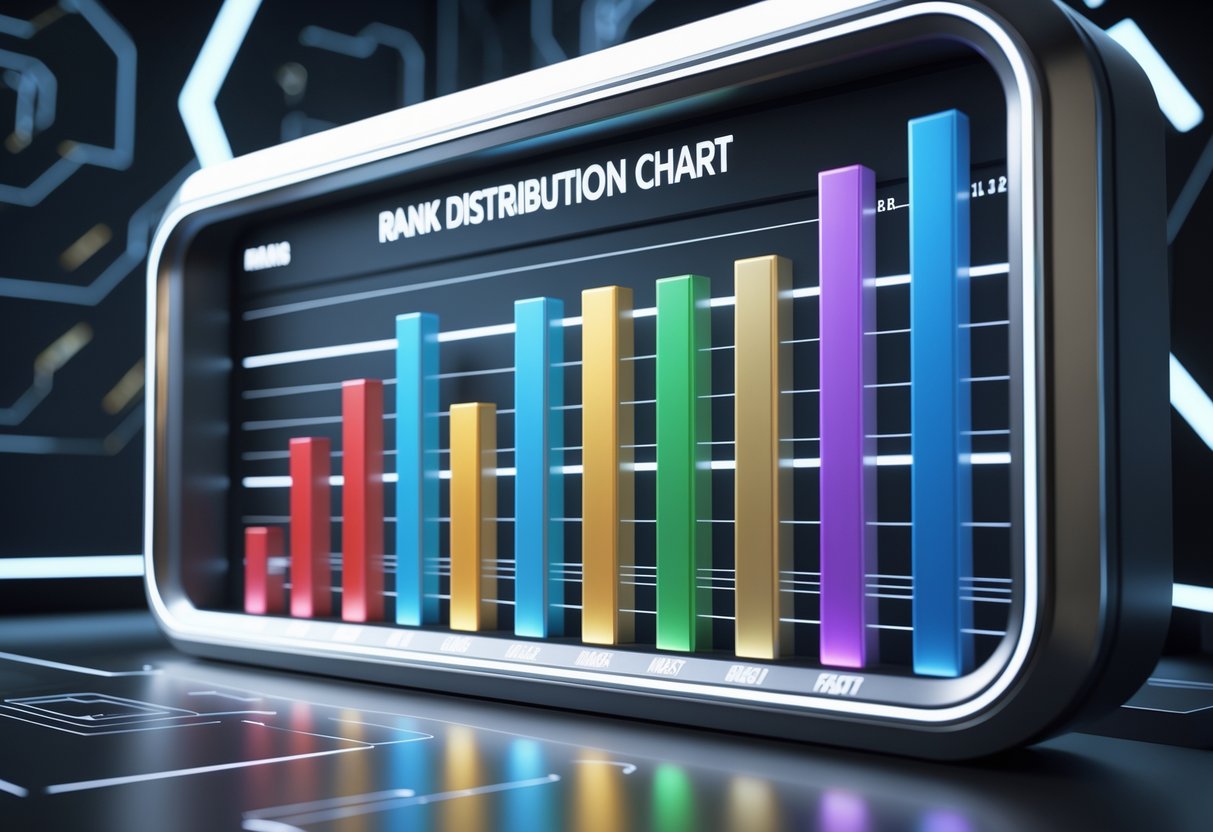
Marvel Rivals’ July 2025 PC data covers 3.79 million ranked players. The numbers show a heavy tilt toward the lower ranks—Bronze alone holds almost half of all competitive players.
Bronze and Silver Population
Bronze ranks absolutely dominate Marvel Rivals’ competitive landscape. Just Bronze III alone pulls in 1,218,873 players, which is about 32.12% of everyone in ranked. That’s a wild concentration at the entry level.
Bronze II and Bronze I have 8.31% and 6.99% of the playerbase. If you add up all the Bronze ranks, they make up 47.42% of competitive players. Clearly, a ton of folks get stuck at the start.
Silver looks similar but the numbers drop off a bit. Silver III sits at 7.55%, Silver II at 6.47%, and Silver I holds 5.63%. So, Silver’s total population is 19.65%.
Put together, Bronze and Silver make up a massive 67% of Marvel Rivals’ ranked playerbase. If you’re new and jumping into ranked, you’ll be with the majority—not just struggling alone at the bottom.
Distribution at Higher Ranks
Gold through Diamond ranks thin out pretty quickly. Gold III has 7.20% of players, but Gold II drops to 4.99%, and Gold I down to 4.18%. The total Gold population comes to 16.37%.
Platinum is where things really start to get tough. Platinum III has 4.92%, but Platinum I only 2.02%. Diamond ranks get truly exclusive, with Diamond III at 2.10% and Diamond I just 0.79%.
Grandmaster is a bit of an outlier. Even though it’s high up, Grandmaster III has 1.17% of players. Seems like a lot of top players hang out here before trying to push even higher.
Exclusive Top Ranks Data
Celestial and above are for the real elites. Celestial III is just 0.31% of players, and Celestial I? Only 0.05%. That’s around 11,918 and 1,714 people.
Eternity is even rarer—only 1,576 players, or 0.04%. If you get here, you’ve definitely earned some bragging rights.
One Above All is as exclusive as it gets. Just 560 players, or 0.01%. This rank only allows the top 500, so it’s intentionally scarce—even among the best.
These stats show Marvel Rivals’ ranking system carves out clear skill tiers. Every big rank boundary is a real milestone, and the gaps just get wider the higher you go.
Rank Decay and Seasonal Changes
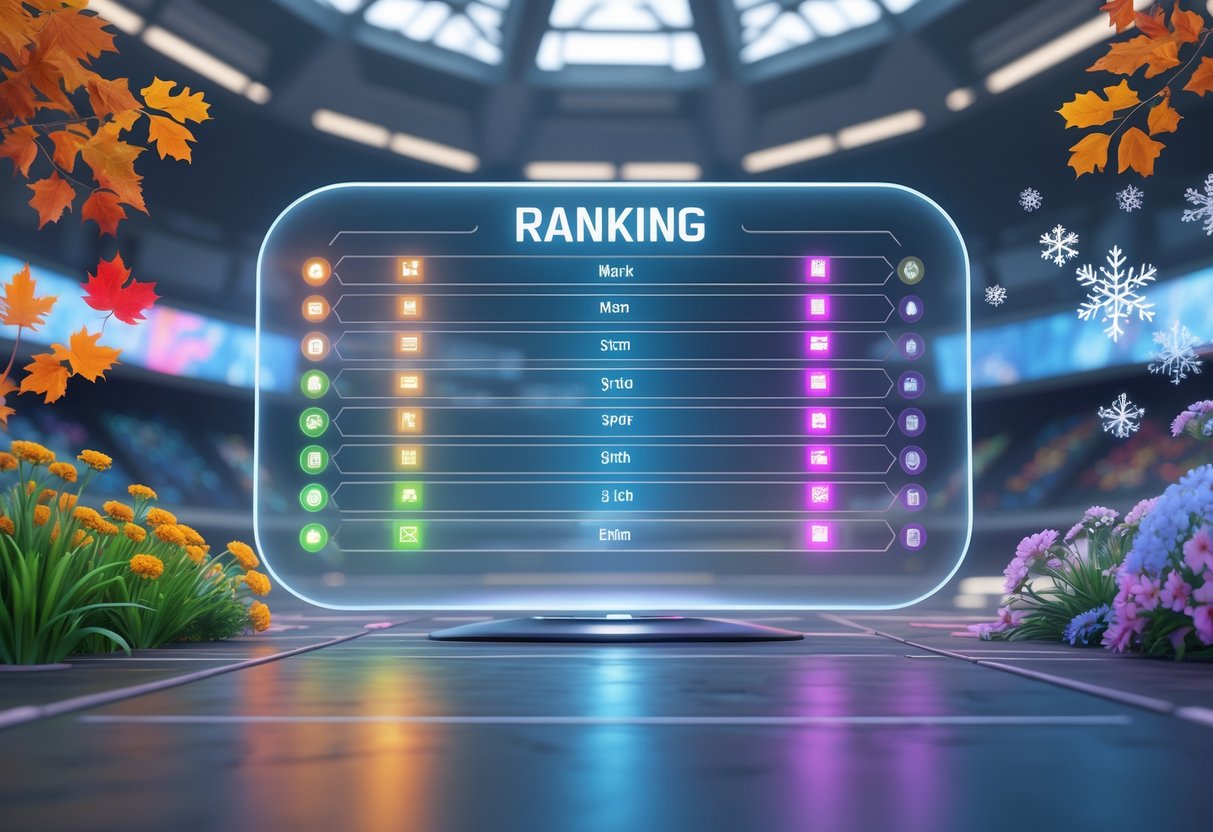
Marvel Rivals resets player positions each season with rank decay. The system drops everyone by several divisions and uses performance-based scoring to reward skill, not just wins.
Soft Demotions
Soft demotions help players avoid plummeting after a bad streak. The Chrono Shield system steps in so you don’t lose rank right after a rough match.
This protection works differently for each tier. Bronze players get the most help, while Diamond and above get less.
You’ll notice a small shield icon by your rank when it’s active. The game gives you a few matches to bounce back before your rank actually drops.
Heads up: Soft demotions won’t save you from seasonal rank decay—they just soften the blow during regular play.
Rank Decay in Top Tiers
High-ranked players get hit hardest by seasonal drops. In Season 2, every competitive player fell nine stages.
Here’s how the decay shakes out:
| Previous Rank | Season 2 Starting Rank |
|---|---|
| Celestial/One Above All | Platinum |
| Grandmaster | Gold |
| Diamond | Silver |
| Gold | Bronze |
| Silver | Bronze 3 |
If you’re One Above All, you drop all the way to Platinum. The game makes sure top players have to climb back up every season.
Quick tip: Focus on placement matches early in the season. You’ll climb faster and rack up extra points.
Seasonal Rank Preservation
Every new season resets ranks completely. In Season 1, players dropped 11 divisions, and Season 2 made it a flat nine.
You get rewards based on your highest rank from the previous season, not where you finished. So, you don’t have to stress about losing cosmetic rewards.
Performance-based scoring counts more than just wins now. If you put up strong stats, you’ll gain more points when you win and lose less when you don’t.
Pro move: Track your own performance stats as you rank up. It’ll help you maximize points during seasonal resets.
Matchmaking System Insights
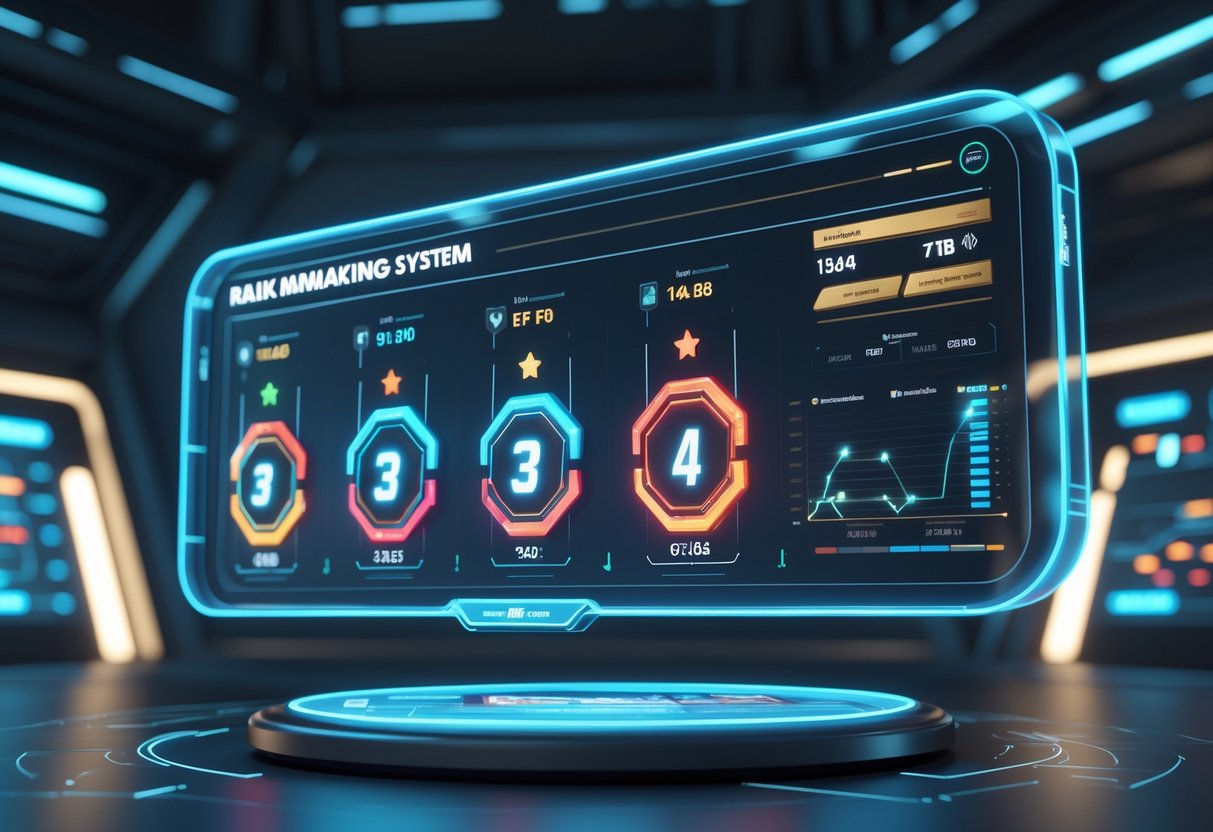
Marvel Rivals runs a pretty advanced matchmaking system. It balances competitive scores and your individual performance to try and make fair games. The system checks out your skill, hero stats, and team comp needs before handing out rank points or deciding match quality.
Skill-Based Team Creation
The matchmaking starts by searching for 12 players with similar competitive scores on your server. If queues get long, it slowly widens the search, but it won’t go too far to avoid lopsided matches.
Once it finds 12 players, it splits everyone into two teams. The goal? Keep the average competitive score as close as possible.
Team size matching rules:
- Six-person teams only face six-person teams
- Four-person teams start by matching with other four-person groups
- If needed, the system mixes things up (like 4+1+1 vs 3+2+1) if it can’t find a perfect match quickly
Population and peak hours matter here. Fewer players online means you might wait longer and get less balanced games.
Performance Evaluation
You get rank points after each match based on base points and performance points. The balance between these depends on your current rank. Base points come from winning or losing, your score, and the enemy team’s average score.
Base points in action:
- If both teams have 3,500: +20 for wins, -20 for losses
- If the enemy’s higher (3,700): +25 for wins, -15 for losses
- If you’re higher (3,300): +15 for wins, -25 for losses
Lower ranks like Silver give performance points more weight (60%) to help skilled players move up. Higher tiers like Celestial flip this—base points matter more (70%).
Role of Hero Performance in Matching
Performance points aren’t just about raw numbers, since heroes have different jobs. The system takes your stats per 10 minutes and compares them to averages for that hero at your rank.
This gives you a performance coefficient—basically, how you stack up against others on that hero. If you swap heroes mid-match, it weights each one by your playtime.
Your final coefficient gets compared to your teammates’ average. This way, the game doesn’t just reward flashy stats that don’t help the team.
The matchmaking doesn’t force you into certain roles, though. Sometimes, you’ll end up with too many damage dealers and no tanks, or you might have to fill a role you’re not comfortable with.
Draft Phase and Hero Bans
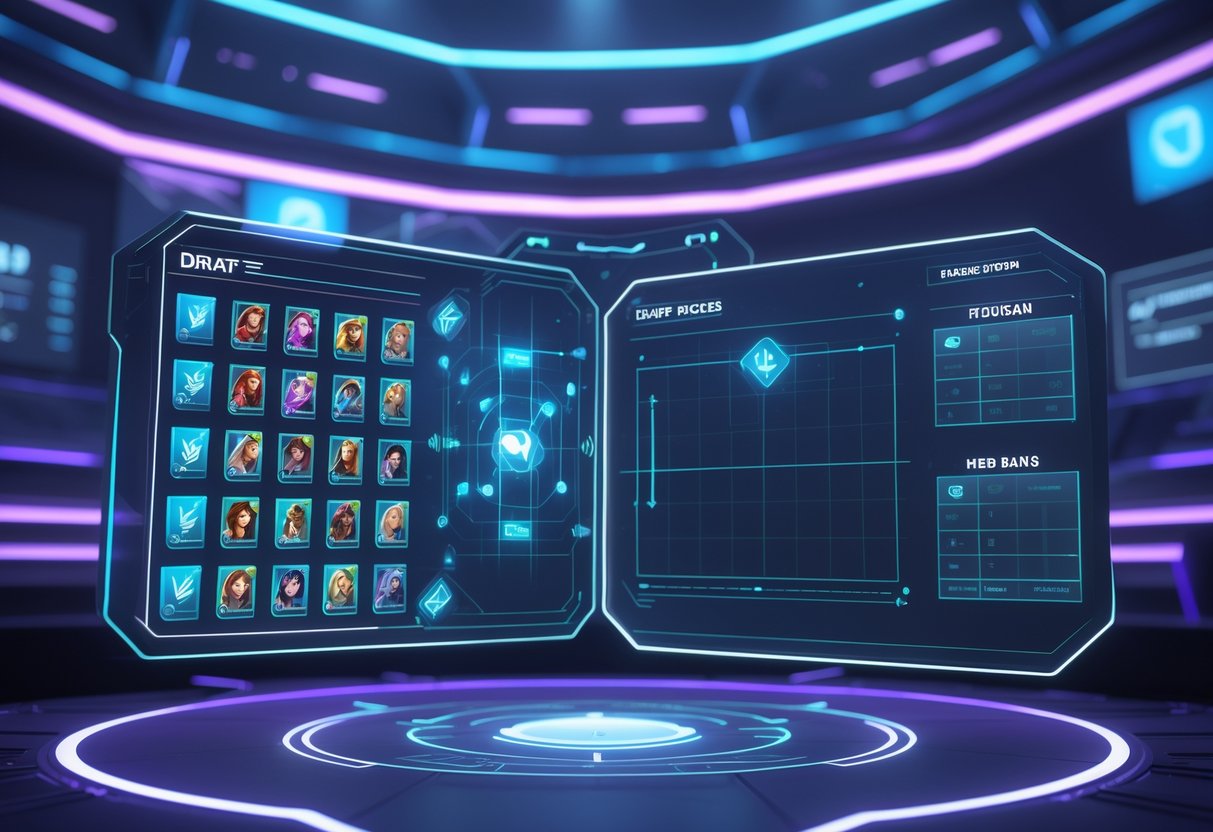
Marvel Rivals adds a strategic twist with a voting system that lets teams ban up to two heroes each before matches start. This only kicks in when everyone hits Gold rank or higher, and it really changes the way matches play out.
Hero Bans Introduction
Both teams get to vote and ban specific heroes before the match. Each team can ban two, but it’s not just a simple majority—it’s probability-based.
Once you’re Gold, every competitive match starts with this ban phase. Teams talk about which heroes are the biggest threats or which ones the enemy relies on.
How voting works:
- Every player votes for heroes to ban
- The system uses probability to pick the bans
- Both teams can ban the same hero, wasting a slot
- You’ll see 2-4 heroes banned per match
Popular bans are usually overpowered heroes or those with strong combos. Banning Human Torch, for example, knocks out his team-ups with Invisible Woman, The Thing, and Spider-Man.
Impact on High-Level Matches
Hero bans get way more important at Diamond rank and above. Players at these levels often main one or two heroes.
The ban system stops one-trick players from steamrolling matches with their favorite pick. If you’re famous for Emma Frost, expect people to ban her and force you onto something else.
Strategic moves:
- Target ban players you recognize
- Disrupt the meta by banning overpowered heroes
- Protect your comp by banning counters
Top teams coordinate bans to protect their strategy or break up strong enemy combos.
This keeps matches from feeling stale and stops the same meta heroes from showing up every game. It also pushes players to broaden their hero pools.
Strategic Depth in Ranked
The ban phase adds a lot of tactical depth to competitive play. Teams have to think ahead before the match even starts.
You’ll want to weigh your team’s strengths and weaknesses when picking bans. If a certain hero always gives you trouble, maybe ban them instead of just following the meta.
Pre-match plans:
- Check what the enemy likes to play from past games
- Talk with your team about ban priorities
- Think about which bans help your planned team comp
- Always have a backup hero ready if your main gets banned
Smart teams use bans to create favorable matchups for their own style. Sometimes it’s better to ban a counter to your comp than just an overpowered hero.
Players who can flex onto multiple heroes are a huge asset. If you’re a one-trick, you’re in trouble when someone bans your favorite pick.
Party Restrictions and Team Composition
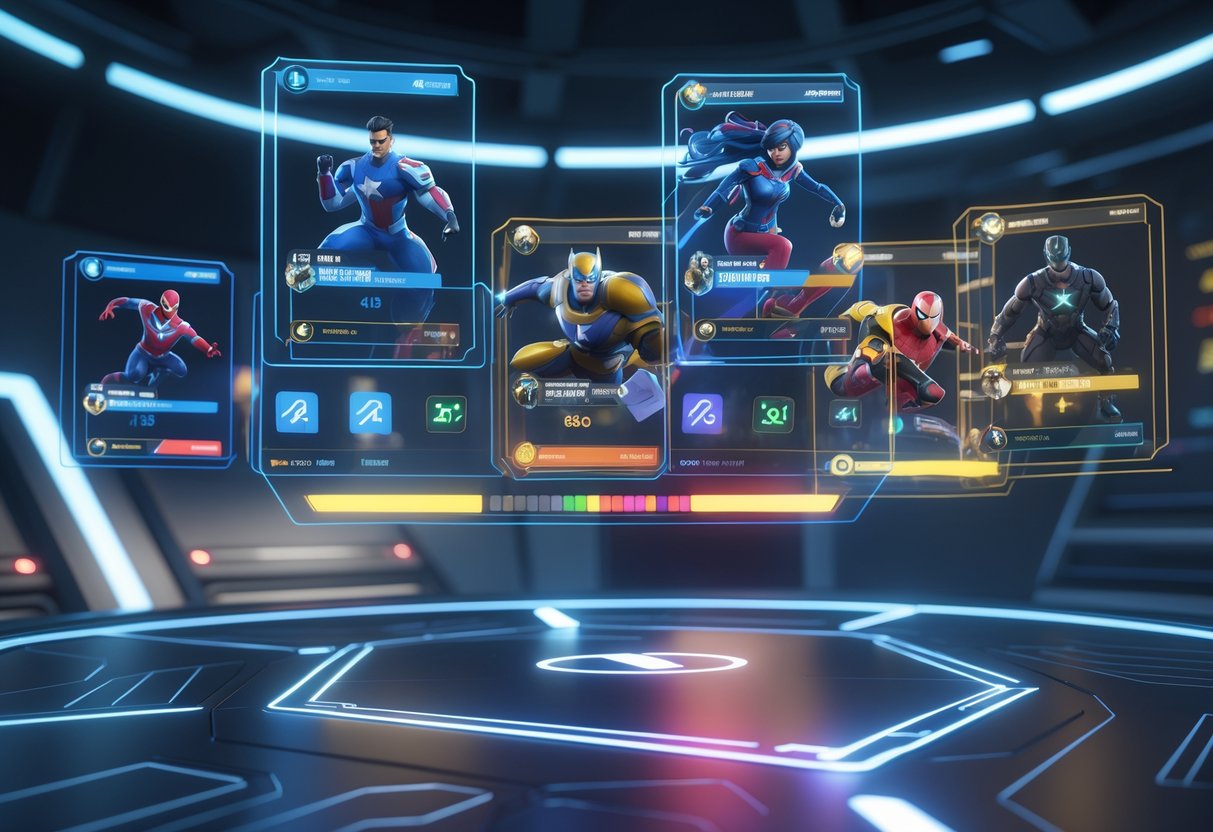
Marvel Rivals enforces party restrictions to keep ranked play fair. The system limits which ranks can team up, and the rules get stricter at higher tiers.
Party Limitations by Rank
The party system changes based on your rank. Lower ranks have more freedom.
Bronze to Gold II players can group with anyone. You and your friends can play together, no matter your rank. It’s a good way for new players to learn.
Gold I to Celestial I players have to stay within three divisions. So, Gold I can only party with Silver II through Platinum I. This cuts down on boosting but still lets friends queue together.
Higher tiers clamp down harder. Celestial II can only duo with Eternity or One Above All if their RP gap is under 200.
Eternity and One Above All? They can only play solo or duo with Celestial II/I, and only if the RP difference is 200 or less.
| Player Rank | Queue Type | Party Rule |
|---|---|---|
| Bronze – Gold II | Any | No restriction |
| Gold I – Celestial I | Any | Within three divisions |
| Celestial II | Duo only | Eternity/One Above All ≤200 RP gap |
| Eternity/One Above All | Solo/Duo | Celestial II/I ≤200 RP difference |
Fairness and Balance Mechanisms
These rules protect ranked integrity. If there weren’t any limits, high-rank players could just boost their lower-ranked friends all day.
The three-division rule tries to strike a fair balance. It blocks extreme skill gaps but still lets most friends team up. Sometimes, you’ll have to wait for slower climbers to catch up.
RP gap limits at high ranks stop point manipulation. The 200 RP threshold makes sure players of similar skill face off, which keeps top-tier matches tough and competitive.
Other games like Valorant and Overwatch use similar systems. Most players seem to accept these trade-offs for fairer games and more accurate rankings.
Quick tip: Always check your friends’ ranks before you queue. The system just blocks parties that break these rules, so you’ll save everyone some time.
Competitive Rewards and Incentives
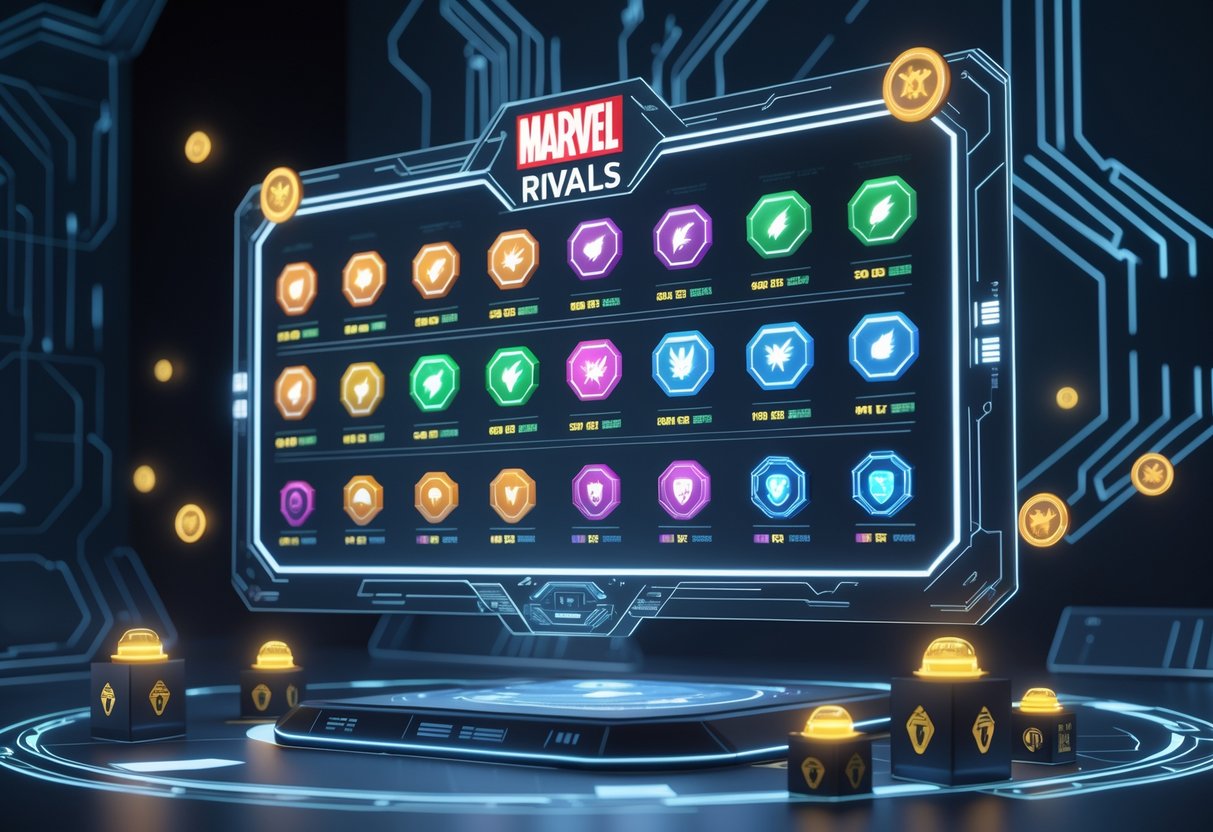
Marvel Rivals’ competitive ranked mode dishes out some pretty solid rewards that scale with your rank achievement. You get seasonal rewards for hitting certain tiers, plus ongoing incentives to keep your rank up all season.
Rank-Based Rewards
Each rank tier in competitive mode unlocks specific cosmetic rewards to show off your progress. Gold III is the first big milestone, giving you the exclusive Golden Diamond Emma Frost skin—it’s limited and you can only get it through ranked play.
Climbing higher unlocks even flashier stuff. Platinum III gives you an animated Phoenix-Flames profile border, and Diamond III adds special particle effects to your border. These visuals let everyone know what you’ve achieved in every match.
The top tiers don’t give out hero skins, but instead offer exclusive account medals. Grandmaster III unlocks the Grandmaster Crest of Honour, Celestial III has the Celestial Crest, and both Eternity and One Above All share a top-tier crest.
If you finish in the top 500, you get the orange Top 500 Crest—the rarest medal out there. Only the absolute best players each season pick this up.
Seasonal Incentives
Marvel Rivals refreshes all competitive rewards at the start of every season. This keeps players motivated to maintain or improve their rank.
You need to play at least 10 competitive matches each season to qualify for rewards, no matter what you did last season.
If you can reach Gold III every season, you’ll always get one new limited skin. These skins never return to the store, so they’re permanently exclusive to ranked players.
Warning: Higher-tier players face rank decay. Eternity and One Above All ranks lose RP after seven days of inactivity, which can drop you back to Celestial.
The reward system encourages both climbing and holding your position. Marvel Rivals bases rewards on your peak rank, not where you finish, so you don’t have to stress about last-minute drops.
Tips for Climbing the Marvel Rivals Ladder
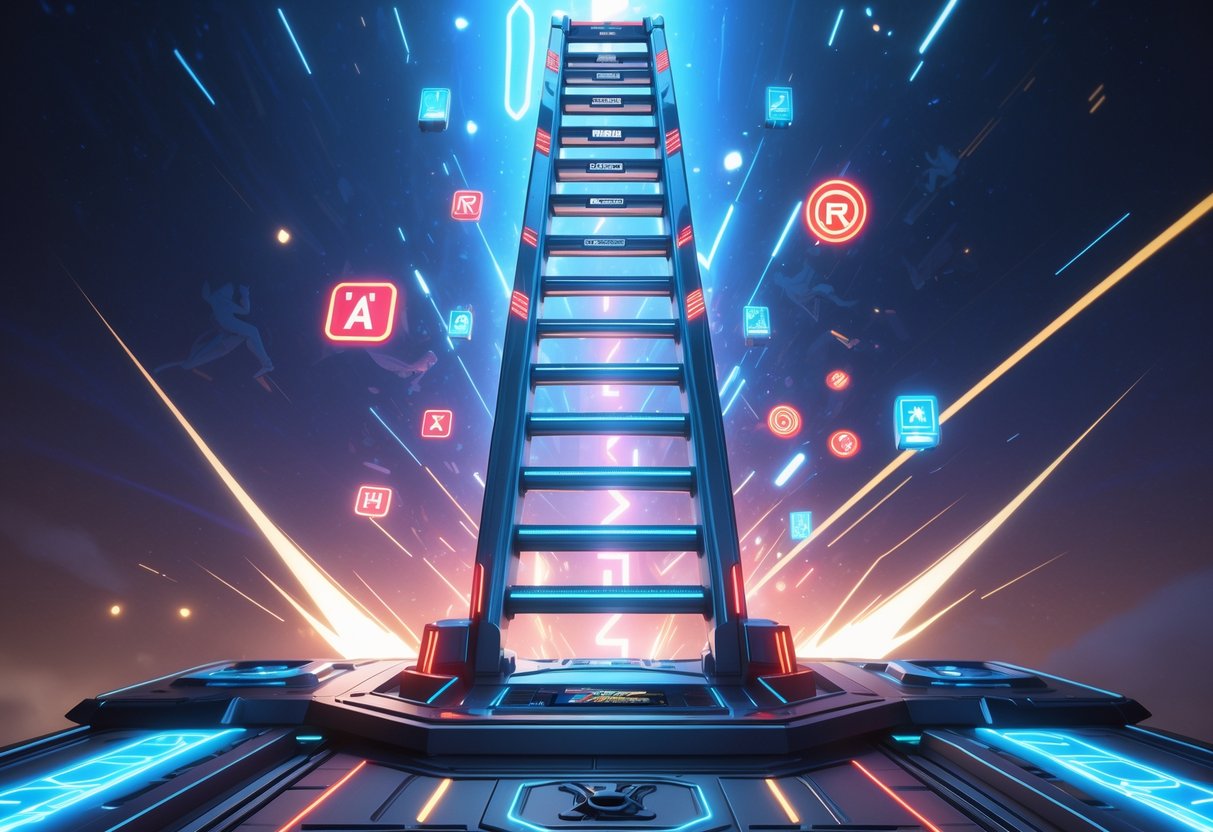
If you want to climb ranks, focus on two things: picking and mastering the right heroes for your level, and working with your team to win more often.
Hero Selection and Mastery
It’s best to focus on two heroes per class instead of trying to learn everyone. This gives you backup picks when bans start at Gold III and helps you keep your win streaks going.
Top climbing heroes:
- Vanguard: Captain America, Magneto
- Duelist: Spider-Man, Iron Man
- Strategist: Luna Snow, Mantis
Master one main hero before adding others. Learn their cooldowns, positioning, and how they match up against popular picks.
Quick win: Use in-game stats to track which heroes you play best. Your win rate and average eliminations will highlight your strongest picks.
If you hit four wins in a row, you’ll get bonus RP that can skip entire sub-tiers. Sticking to your best heroes maximizes these streaks.
Season 2 rewards individual performance, so focus on kills, objective time, and staying alive. Deaths really hurt your RP gains.
Effective Teamplay Strategies
Communication wins games, even if you’re with randoms. Use voice chat or pings to call out flankers and coordinate fights.
Essential team coordination:
- Group up before big pushes
- Focus fire on the same targets
- Protect your Strategist heroes
- Contest objectives together
Warning: Don’t chase kills alone. Marvel Rivals punishes players who overextend without support.
During draft, read your team’s composition. If no one picks a tank, consider switching from DPS to fill the gap. Balanced comps win more than perfect solo play.
Watch for enemy ultimates and sync up your own. Combining things like Magneto’s pull and Spider-Man’s area damage can win team fights easily.
If you’re solo queuing, pay extra attention to positioning and survival. Your RP gains depend on your performance when you’re not in a party.
Frequently Asked Questions

The Marvel Rivals ranked system brings up lots of questions about progression, rewards, and requirements. Players wonder about rank distribution, what rewards they can earn, and when resets happen.
How does the rank distribution work in Marvel Rivals?
Most players in Marvel Rivals end up in the lower tiers. July 2025 data from 3.79 million PC players shows over 32% stuck in Bronze III.
Silver and Gold each have about 20% of players, while Platinum sits at roughly 10%.
Diamond and above are rare. Only 3.1% of players reach Diamond or higher.
The top tiers are extremely exclusive. Eternity has just 0.04% of players, and One Above All is capped at exactly 500.
This creates a pyramid. If you reach Platinum, you’re already in the top 20%.
What are the different ranks available in Marvel Rivals, and how can I achieve them?
Marvel Rivals has nine main tiers with 23 total ranks. You start at Bronze III and can climb all the way to One Above All.
Most tiers have three sub-ranks (III, II, I). Bronze, Silver, Gold, Platinum, Diamond, Grandmaster, and Celestial all use this structure.
Eternity and One Above All are single-tier ranks at the very top.
You need 100 Rank Points (RP) to move up one sub-tier. Advancing a full tier takes 300 RP.
Winning four matches in a row gives you bonus RP, which can sometimes skip a whole sub-tier.
Could you explain how the rank tracking system functions in Marvel Rivals?
The rank tracking system is built around Rank Points (RP). Every match gives or takes RP based on how well you do.
Season 2 put more weight on individual performance. You earn extra RP for kills, objective time, and dying less.
The Chrono Shield protects you from dropping right after a promotion. Your first loss after moving up won’t cost RP.
At higher tiers, you need more wins to recharge your Chrono Shield. This makes climbing increasingly tough at the top.
Matchmaking restricts party sizes by rank. Gold I and above can only queue with players within three divisions.
What rewards can I expect to receive as I progress through the ranks in Marvel Rivals?
Season 2 rewards start at Gold III with the Golden Diamond Emma Frost skin. It’s your first big milestone.
Platinum III unlocks an animated Phoenix-Flames border. Diamond III gives you a fancy particle border effect.
Grandmaster III and above get Crests of Honour as account medals. These badges show off your peak achievements.
Celestial players earn exclusive Celestial Crests. Eternity and One Above All share the same top-tier crest.
Top 500 players get orange Top 500 Crests. These are the most exclusive rewards in the game.
Is there a rank reset in Marvel Rivals, and if so, how often does it occur?
Marvel Rivals does seasonal rank resets at the start of each new season. Everyone drops exactly nine sub-tiers from their last rank.
The devs once planned mid-season resets, but backlash led them to scrap that idea.
Now, you keep your rank all season. You just need 10 competitive matches in the second half to qualify for new rewards.
Rank decay only hits the highest tiers. Eternity and One Above All players lose RP after seven days of inactivity.
If you go inactive, you can drop back to Celestial. Just play once a week to prevent this.
What are the requirements for reaching the Celestial rank in Marvel Rivals?
To hit Celestial, you’ve got to climb through all seven lower tiers. You’ll start at Bronze III and work your way up to Grandmaster I before you even get a shot at Celestial.
Honestly, it’s a grind. Most players spend hundreds of matches just trying to get there, and for many, it takes a few seasons.
Once you’re in Celestial, matchmaking gets a lot stricter. You can only duo queue with other Celestial, Eternity, or One Above All players, and you have to be within 200 RP.
At this level, pick and ban phases really matter. If you can master several heroes for each role, you’ll avoid getting completely shut down by bans.
Staying active is a must in Celestial. If you take long breaks, you’ll get hit with inactivity penalties and drop back down to lower ranks.

